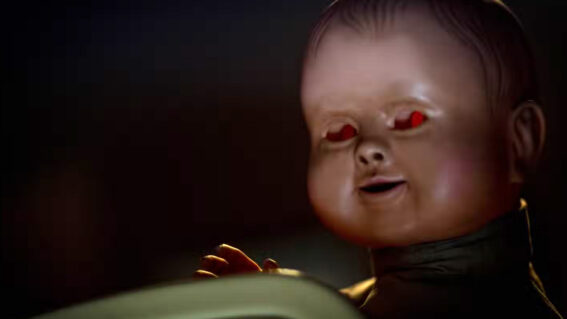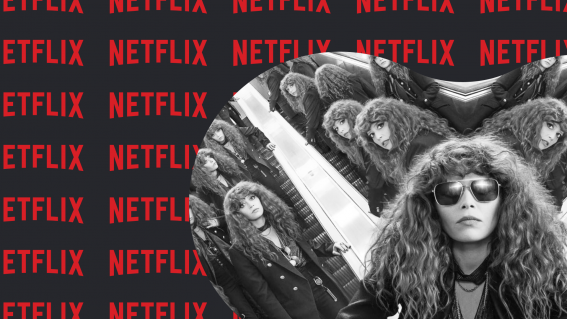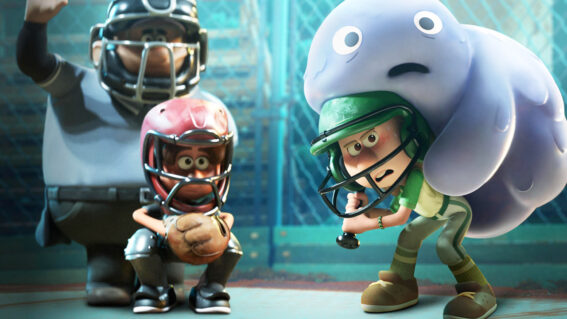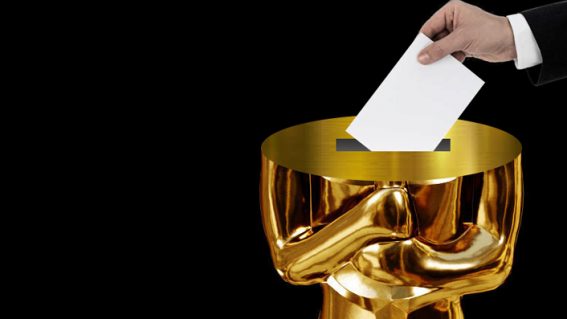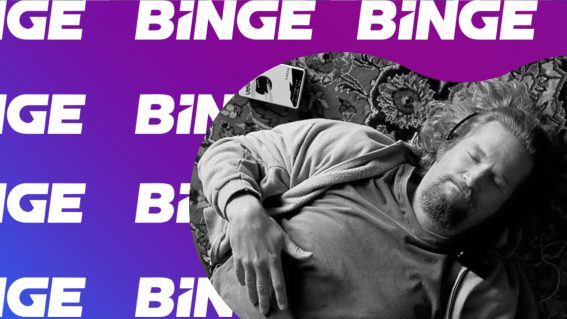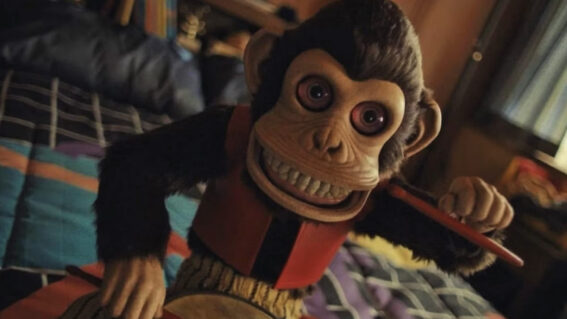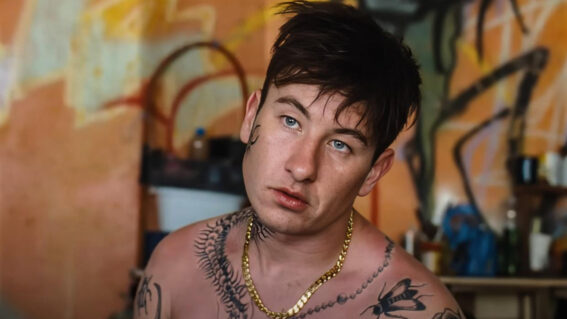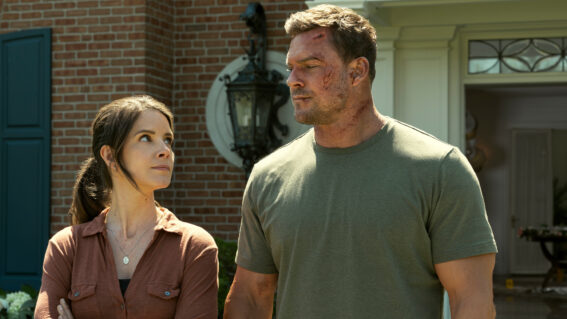Run Lola Run is the coolest movie ever made about running
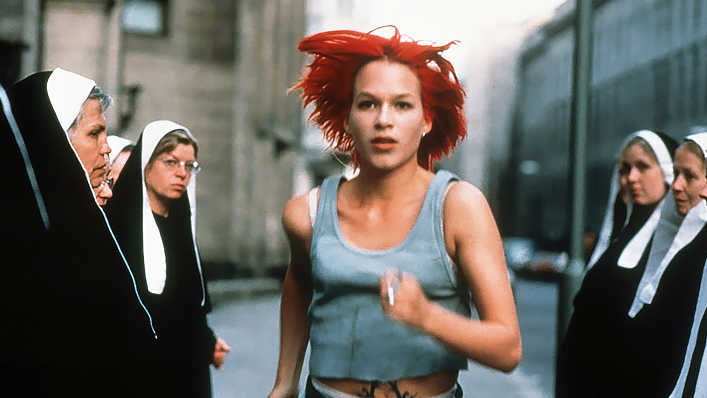
With the 1998 classic Run Lola Run now finally available to stream in Australia, via SBS on Demand, critic Luke Buckmaster revisits this wildly entertaining and ferociously paced film.
Run Lola Run is the coolest movie ever made about running. Period. It’s lean, it’s mean, it even follows Jean-Luc Godard’s requirements for essential drama: “all you need for a movie is a gun and a girl”. To which we can add: “and maybe some running shoes”.
Nobody bar nobody pounds the pavement like Franka Potente, who stars in the titular role as a rather…hurried protagonist who charges across the city to come to the rescue of her boyfriend Manni (Moritz Bleibtreu). Nor does anybody look like her: that shock of retina-burning red hair; the clashing green pants; the visage that says “MOVE IT, NOW”.
Pace is important in Tom Tykwer 1998 cult classic, which landed on SBS on Demand this week and isn’t available on any other streaming platform in Australia. Any mention of “pace” must be prefaced with “fast”. This film is so fast it chews through its own running time and even—like a video game—resets itself. Twice. The story is a triptych composed mostly of three 20 minute-ish sections.
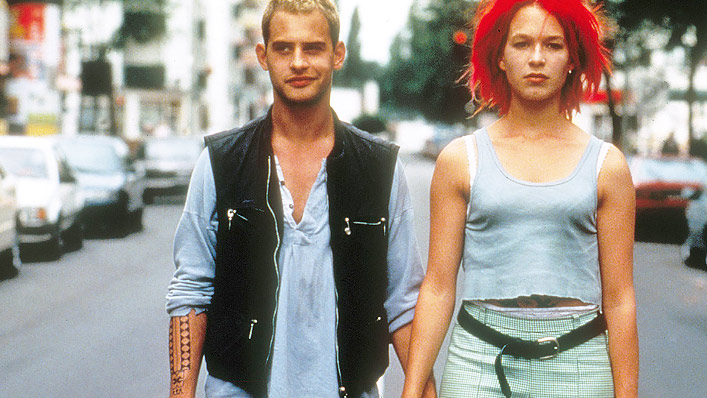
After the camera swoops in from outer space (because style) Lola answers a telephone the same colour as her hair (because crazy production design). It’s Manni and he’s in trouble, having accidently left $100,000 in cold hard cash in a bag on a train (because MacGuffin). He needs to get that amount of money lickety-split, lest he find himself on the receiving end of a very unforgiving gangster (because high stakes). Manni decides he’ll rob the supermarket across the road in precisely 20 minutes, unless Lola performs a miracle and arrives with the spondooli before then (because time pressure).
Tykwer packs in close-ups during their preliminary phone conversation, expanding the frame when the title gets literalised and Lola springs out of her apartment with a volcanic pep in her step. An introductory shot of a clock with its hands spinning forward informs us that time is important: of the essence, as they say, and part of the essence of the film too. Despite the clock’s unnaturally fast hands the action unfolds in close to real-time, creating a terrific contradiction: a turbo-charged, preternaturally quick experience that more or less operates within the narrative speed of real-life.
Like the more recent Mad Max: Fury Road, another film that charges ahead with whiplash-inducing velocity, Tykwer embraces the challenge of telling a story on the run. One of the flashy techniques he uses to do this is rapid-fire photo montages depicting strangers Lola rushes past, which, preceded by the high-pitched sound of a camera whirring to life, paint sweeping impressions of the rest of their lives.
After Lola moves past a man on a bicycle, for instance, it’s whir whir whir, photo photo photo: he gets assaulted by goons then meets his future wife—a nurse—while in hospital. When Lola rushes past a dark-haired lady in a hallway, who looks thoroughly unimpressed, it’s whir whir whir, photo photo photo: she gets in a car accident, becomes an addict and kills herself.
With each montage lasting for less than 10 seconds, the words “narrative efficiency” barely begin to cut it. These montages are like La Jetée on methamphetamine: director Chris Marker’s 1962 French short about time travel in a post-apocalyptic Paris, famously told only using a series of photographs accompanied by a voice-over. Do we still call these “moving pictures” if the pictures themselves don’t move?
Motion is created not in these stationary images but through them; it’s the relationship between the pictures that creates meaning. One image by itself stands for nothing, temporally speaking, but the addition of a second, related image indicates the passing of time. Time, again, is crucial to Run Lola Run and to film and TV more generally—the key modality distinguishing motion pictures from photography.
And yet, if you were to put a series of photographs into a slide projector and moved through them quickly, you could create montages very similar to those in Run Lola Run. So, are these scenes photography presented on a screen or are they motion pictures?
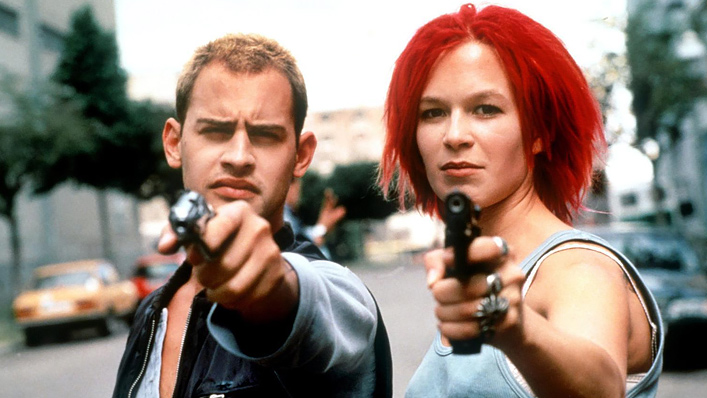
They remind us that creative mediums house other mediums inside them, creating a kind of matryoshka doll of artistic forms. The cinema for instance can contain photography (but not vice versa) and virtual reality can contain cinema (but again not vice versa). The reason I mention all this is not because these questions are core to Run Lola Run but because Tykwer really, really wants to make you think about something more than bags of cash and pounding the pavement. For me this is the most interesting thoughtline.
The desire to get audiences thinking manifests in the form of the film’s one major disappointment: its dopey Butterfly Effect-like ruminations on the nature of fate and choice. The director has nothing to say on this subject other than life can be random and the events that come to define our existence are not preordained. Well, so what? It’s no big surprise that the video game-esque elements are cooler than the quasi-philosophy.
Which brings me back to my original point: this film is cool. Very cool. The coolest film ever made about running, and also the coolest film ever made about running to save a cash-strapped potatohead of a boyfriend while whooshing past random strangers whose life trajectories are presented via rapid-fire photo montages that pose questions about the very nature of the artistic medium of motion pictures. Phew. That took it out of me. I need to lie down for a bit.


